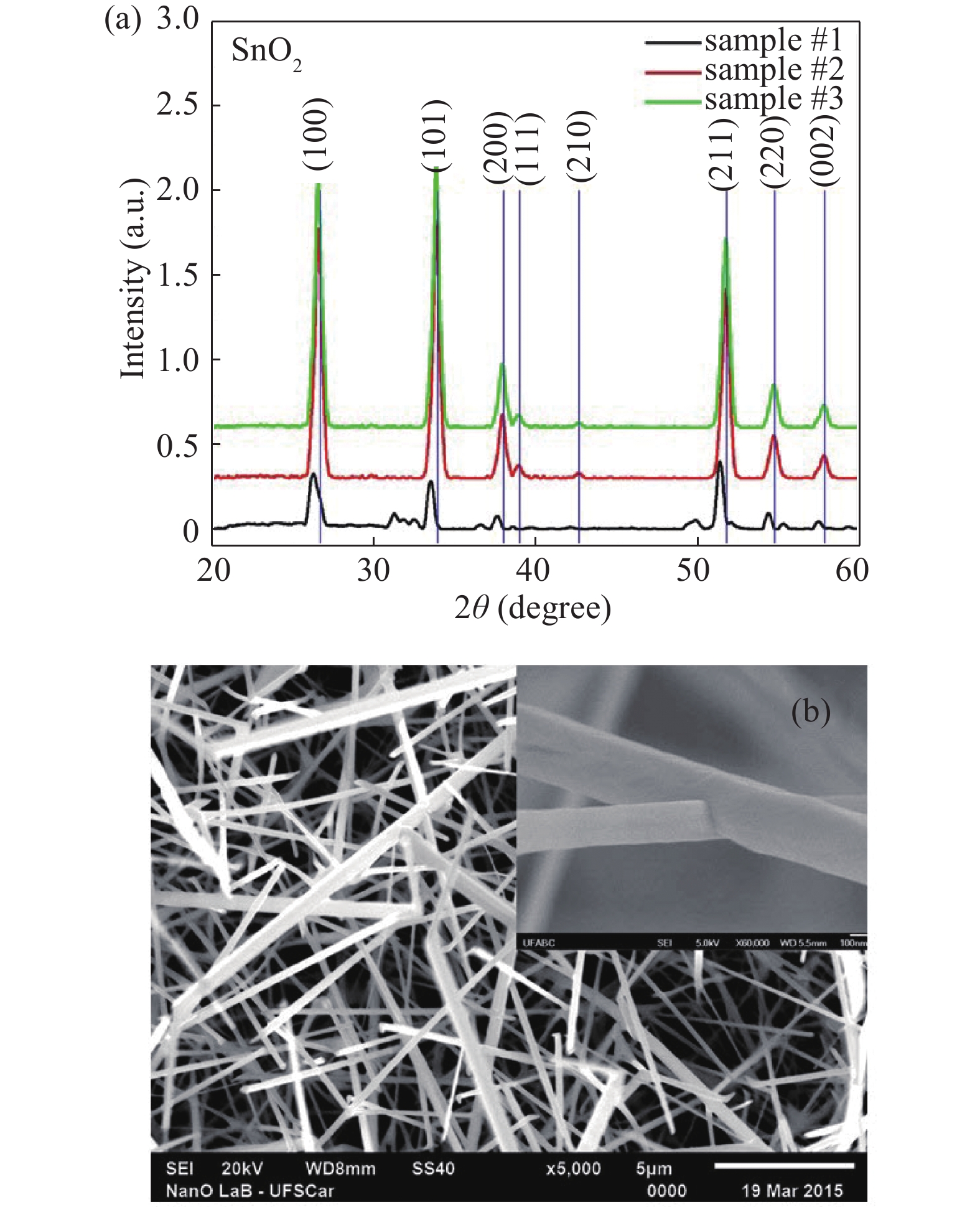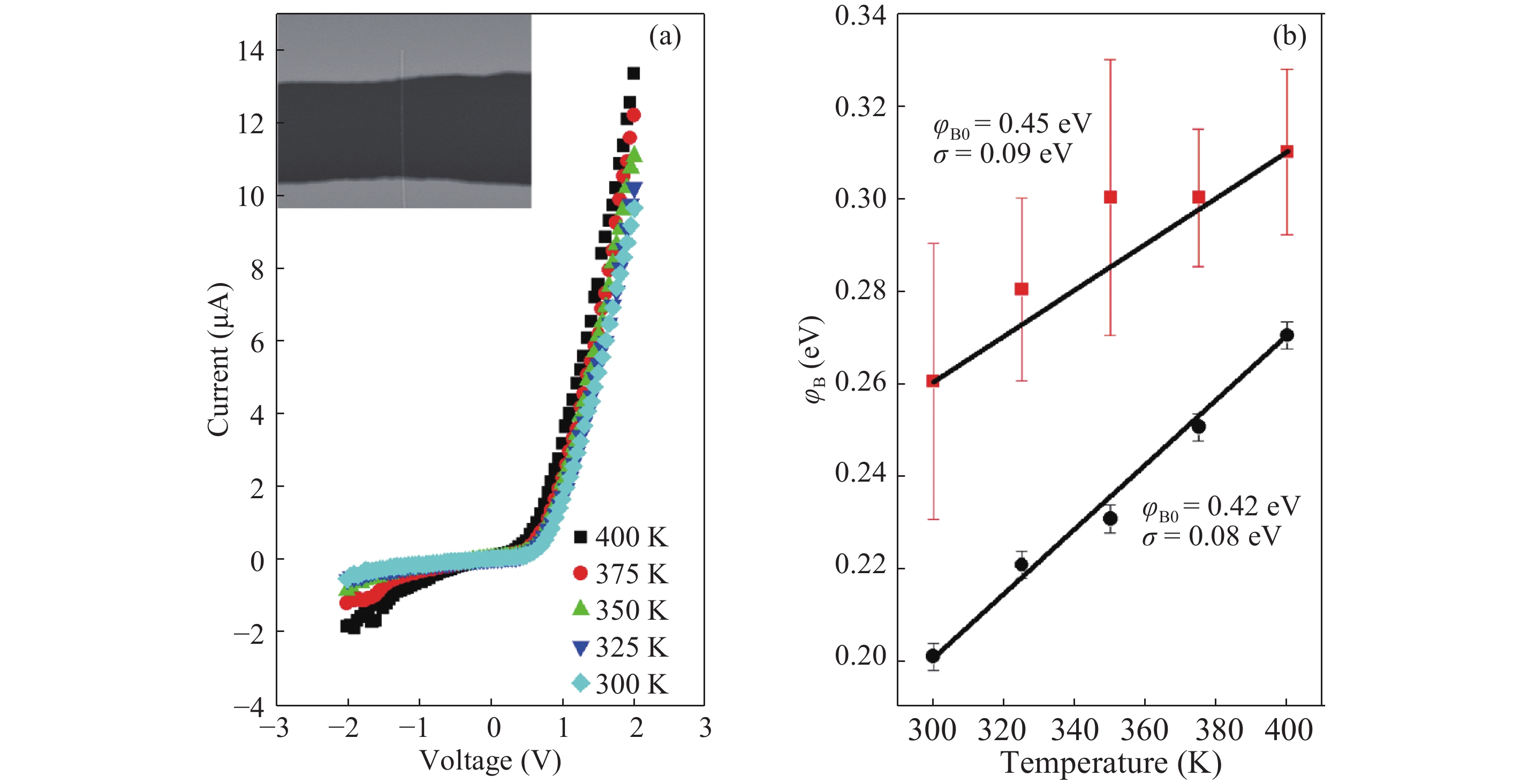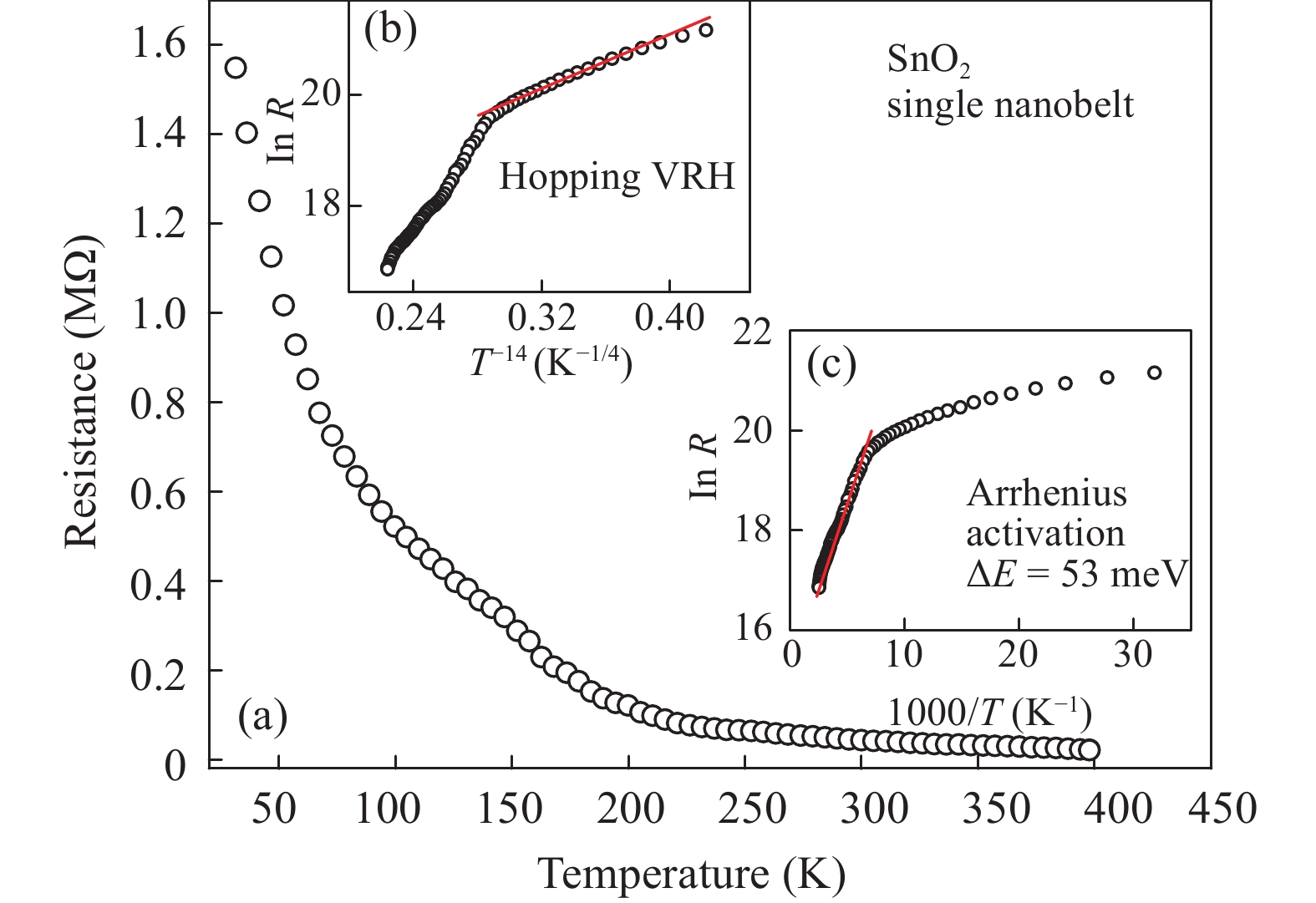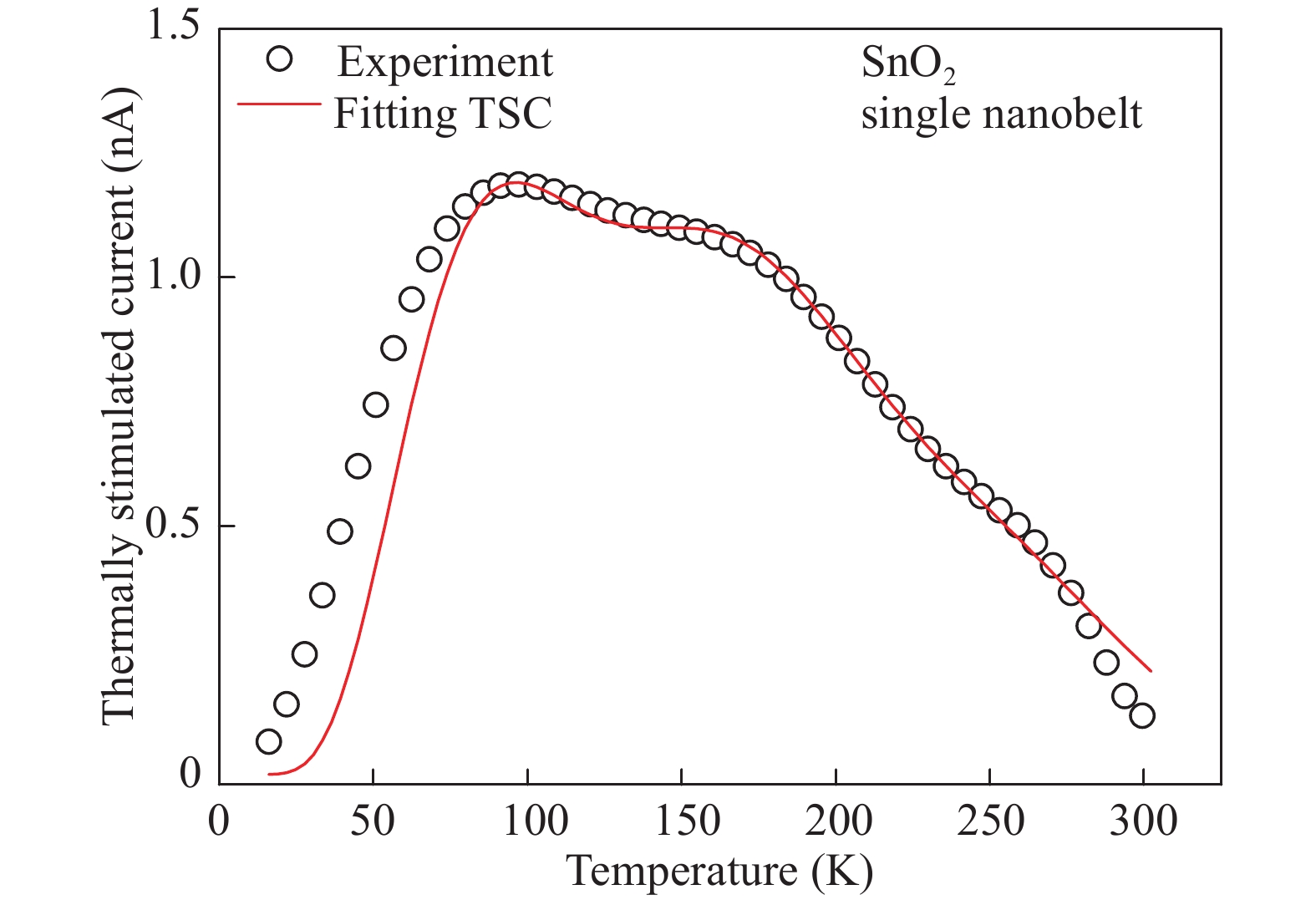| Citation: |
Olivia M. Berengue, Adenilson J. Chiquito. Direct evidence of traps controlling the carriers transport in SnO2 nanobelts[J]. Journal of Semiconductors, 2017, 38(12): 122001. doi: 10.1088/1674-4926/38/12/122001
****
O M Berengue, A J Chiquito. Direct evidence of traps controlling the carriers transport in SnO2 nanobelts[J]. J. Semicond., 2017, 38(12): 122001. doi: 10.1088/1674-4926/38/12/122001.
|
Direct evidence of traps controlling the carriers transport in SnO2 nanobelts
DOI: 10.1088/1674-4926/38/12/122001
More Information
-
Abstract
This work reports on direct evidence of localized states in undoped SnO2 nanobelts. Effects of disorder and electron localization were observed in Schottky barrier dependence on the temperature and in thermally stimulated currents. A transition from thermal activation to hopping transport mechanisms was also observed. The energy levels found by thermally stimulated current experiments were in close agreement with transport data confirming the role of localization in determining the properties of devices. -
References
[1] Sberveglieri G, Faglia G, Groppelli S, et al.Ultrasensitive and highly selective gas sensors using three-dimensional tungsten oxide nanowire networks. Semicond Sci Technol, 1990, 5(12): 1231 doi: 10.1088/0268-1242/5/12/015[2] Göpel W. Ultimate limits in the miniaturization of chemical sensors. Sens Actuators A, 1996, 56(1/2):83[3] Henrich V E, Cox P A. The surface science of metal oxides. Cambridge University Press, 1994[4] Barsan N, Schweizer-Berberich M, Gopel W. Fundamental and practical aspects in the design of nanoscaled SnO2 gas sensors: a status report. Fresenius J Anal, 1999, 365(4): 287 doi: 10.1007/s002160051490[5] Kolmakov A, Klenov D O, Lilach Y, et al. Enhanced gas sensing by individual SnO2 nanowires and nanobelts functionalized with Pd catalyst particles. Nano Lett, 2005, 5(4): 667 doi: 10.1021/nl050082v[6] Dai Z R, Gole J R, Stout J D, et al. Tin oxide nanowires, nanoribbons, and nanotubes. J Phys Chem B, 2002, 106(6): 1274 doi: 10.1021/jp013214r[7] Grace Lu J, Chang P, Fan Z. Quasi-one-dimensional metal oxide materials-synthesis, properties and applications. Mater Sci Eng R, 2006, 52(1-3): 49[8] Lanfredi A J C, Geraldes R R, Berengue O M, et al. Electron transport properties of undoped SnO2 monocrystals. J Appl Phys, 2009, 105(2): 023708 doi: 10.1063/1.3068185[9] Berengue O M, Kanashiro M K, Chiquito A J, et al. Detection of oxygen vacancy defect states in oxide nanobelts by using thermally stimulated current spectroscopy. Semicond Sci Technol, 2012, 27(6): 065021 doi: 10.1088/0268-1242/27/6/065021[10] Berengue O M, Simon R A, Chiquito A J, et al. Semiconducting Sn3O4 nanobelts: growth and electronic structure. J Appl Phys, 2010, 107(3): 0337171[11] Korber C, Harvey S P, Mason T O, et al. Barrier heights at the SnO2/Pt interface: in situ photoemission and electrical properties. Surf Sci, 2008, 602(21): 3246 doi: 10.1016/j.susc.2008.08.015[12] Wager J F. Transparent electronics: Schottky barrier and heterojunction considerations. Thin Solid Films, 2008, 516(8): 1755 doi: 10.1016/j.tsf.2007.06.164[13] Werner J H, Guttler H H. Barrier inhomogeneities at Schottky contacts. J Appl Phys, 1991, 69(3): 1522 doi: 10.1063/1.347243[14] Lai M, Lim J H, Mibeen S,et al. Size-controlled electrochemical synthesis and properties of SnO2 nanotubes. Nanotechnology, 2009, 20(18): 185602 doi: 10.1088/0957-4484/20/18/185602[15] Mott N F. Metal–insulator transitions. Taylor and Francis, 1990[16] Wrobel J M, Gubanski A, Placzek-Popko E,et al. Thermally stimulated current in high resistivity Cd0.85Mn0.15Te doped with indium. J Appl Phys, 2008, 103(6): 063720 doi: 10.1063/1.2894576[17] Wright H C, Allen G A. Thermally stimulated current analysis. J Appl Phys, 1966, 17(9): 1181 -
Proportional views






 DownLoad:
DownLoad:

















